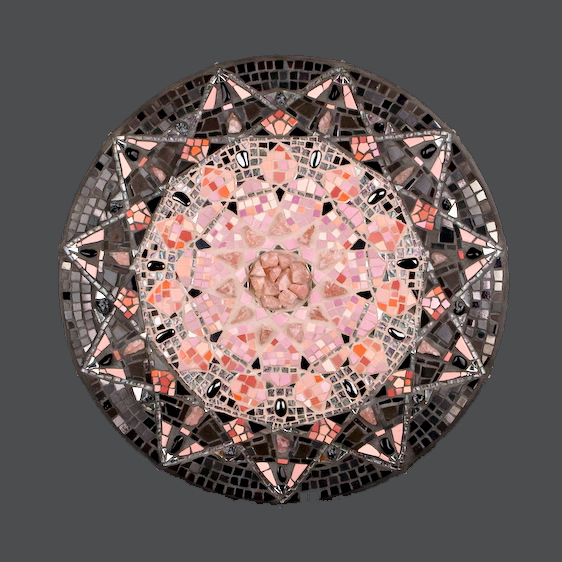“Without symmetry and proportion there can be no principles in the design of any temple…” ~ Vitruvius, Book III, Chap. 1

Through modern technology, science is peering into the depths of the universe and reconnecting us to our origins. We can now see vast, distant spiral nebulas to the smallest nano-particles. The building blocks of life have never before been so visible… Or have they?
This ancient mosaic (above) located at the Getty Villa in Los Angeles, measures about 9 feet square. Though it now hangs on a wall, it was once a pavement from a Roman villa dating back about 2500 years. The precision is impeccable. Each tiny cube of stone was cut and placed to create a spellbinding effect. This spiraling arrangement is known as a phyllotaxis pattern, and is based on intersecting circles in a Fibonacci sequence. One can feel the energetic force field it creates, with the head of the Goddess Medusa at it’s center. This hypnotic pattern was frequently used in conjunction with Medusa, whose myth speaks to the polarizing qualities of beauty and repulsion. The geometric pattern reinforces the dynamic balance of this mythological story and Medusa was a symbol of protection in the architectural setting.
Pyramids, ancient stone circles, and temples were all built in alignment with the heavens, oriented to the sun by close observation of the solstices and equinoxes. Mosaics, by their use as architectural embellishment, were subject to the proportions of the built environment. The mosaic patterns were selected depending on the footprint and use of the room or building itself, not the other way around.

Pompeii, ancient Roman city, postcard from my Parent’s visit in 1947, collection of Lillian Sizemore.
The language of mosaic communicated another layer of invisible science into the inspired and tangible expression of early architecture. Through specific rules and setting styles, known as “opus“, the infinite possibilities in geometric patterning, and masterful execution, mosaics became a transcendent bridge between practical intelligence and the principles of sacred geometry.

Roman Pavement photo: Santiago Rodriguez
Mosaicists worked in relative anonymity and archeologists have described ancient mosaicists, known as musivarii, or ‘Artists of the Muses’, as a network of itinerant laborers and slaves. I suggest that these ancients were also highly skilled and spiritual craftsmen whose closely-guarded techniques were passed on only upon years of loyal apprenticeship accompanied by an intimate understanding of symmetry and proportion.

God the Geometer
Close observation of the natural world was foremost in the ancient mind. Ponder the vibrant complexity of the Medusa mosaic, and consider that mosaicists were presenting the ‘ordered world’—they were employing geometry and pattern to an astonishing level of artistry, and doing it with tiny, pixelated pieces of stone and glass!

